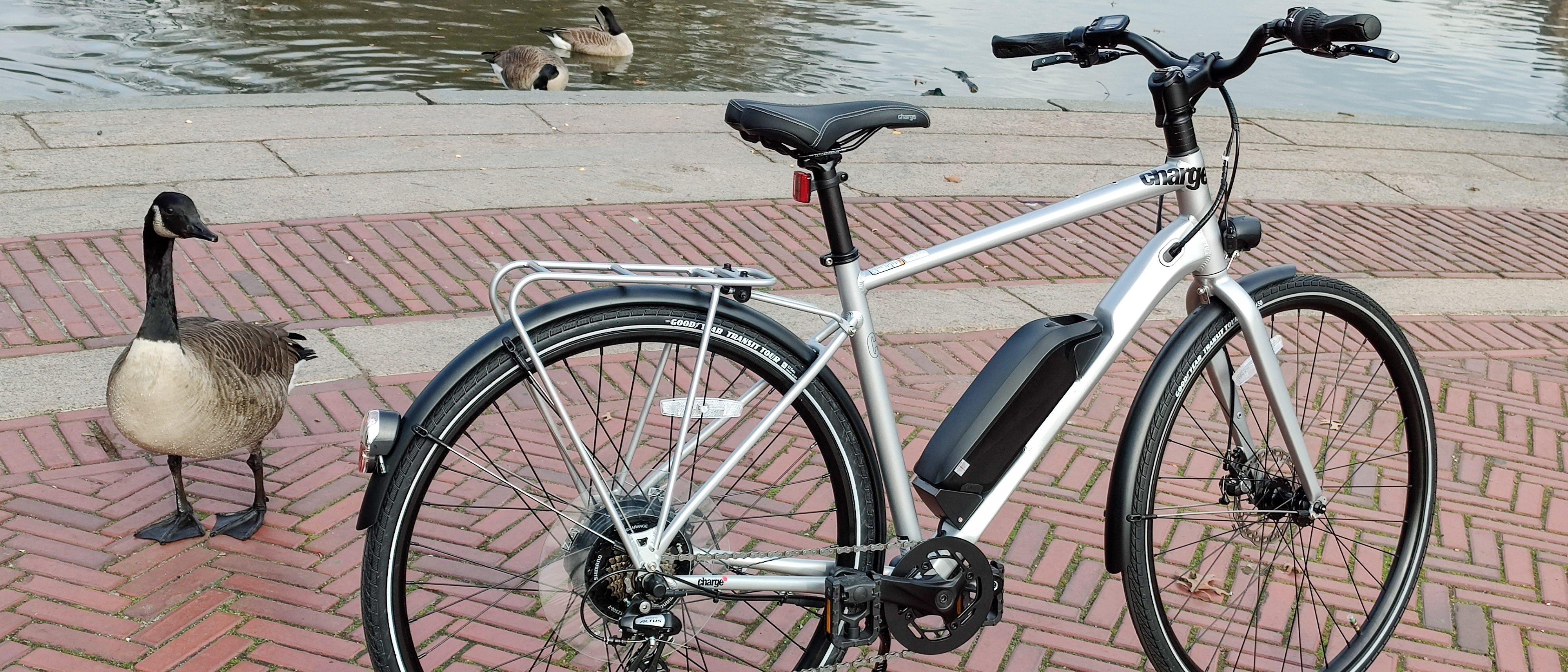Tom's Guide Verdict
A solid e-bike for commuters, the Charge City is not only perfect for urban riders it may also be the easiest bike to set up straight out of the box.
Pros
- +
Stable handling
- +
Full-Throttle assist
- +
Lights and smooth electric boost
Cons
- -
Flimsy fender supports
Why you can trust Tom's Guide
Battery: 418 Wh
Max estimated range: 50 miles
Max assisted speed: 20 mph
Motor: Bafang rear hub motor
Gearing: Shimano 7-speed
Wheel diameter: 28 inches
Weight: 45 lbs. (with battery)
Packing a welter of practical features into a reasonably priced ebike, the Charge Bikes City is a model urban commuter. It also happens to be one of the best designed to ship directly to buyers and unpacked with a minimum of fuss. That makes it ideal for new cyclists or those who have been out of the saddle for a while.
Starting at $1,699, it’s competitively priced for an ebike, and the City comes in both a low-step and a high-step model as well as two sizes, so it can comfortably accommodate riders from 5 foot 1 inch to 6 feet 3 inches. It works like most ebikes in pedal assist mode, but also can go into full-throttle electric mode when needed. Add to this front and rear lights, full fenders, and a 50-mile battery range, and the Charge Bikes City earned our editor’s choice for 2020. Read what else we loved in the rest of our Charge Bikes City review.
Charge Bikes City electric bike: Price and availability
The Charge City originally sold for $1,699 when it was introduced in 2020, and when we first reviewed it. As of 2024, the bike has increased in price to $1,799.
The City comes in a low-step and standard model, and in three colors: red, blue or silver (all for the same price). It also comes in two sizes, one for riders between 5’ 1” and 5’ 9,” and one for riders 5’10” to 6’3.”
The Charge City is one of four lines of electric bikes offered by Charge Bikes. The others are the Comfort 1 (starting at $1,399), the Comfort 2 ($1,899), and the XC ($2,699), which is meant for off-roading.
Charge Bikes City electric bike: Design
Founded by folks from biking icon Cannondale, Charge's sui generis feature is that its bicycles are specially designed for direct shipping to buyers. It means even newbies can assemble the City bike right out of the box in 10 minutes or less.
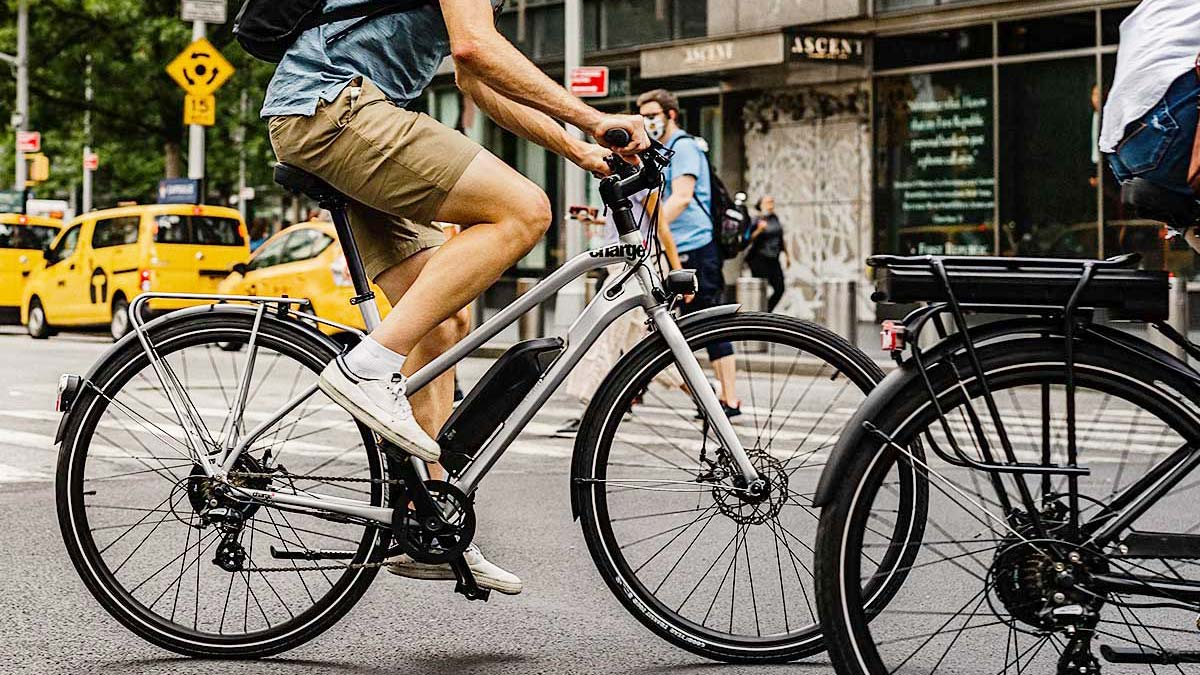
Pull apart the cardboard — according to easy-to-follow instructions — and all you basically have to do is put the front wheel on and ride away.
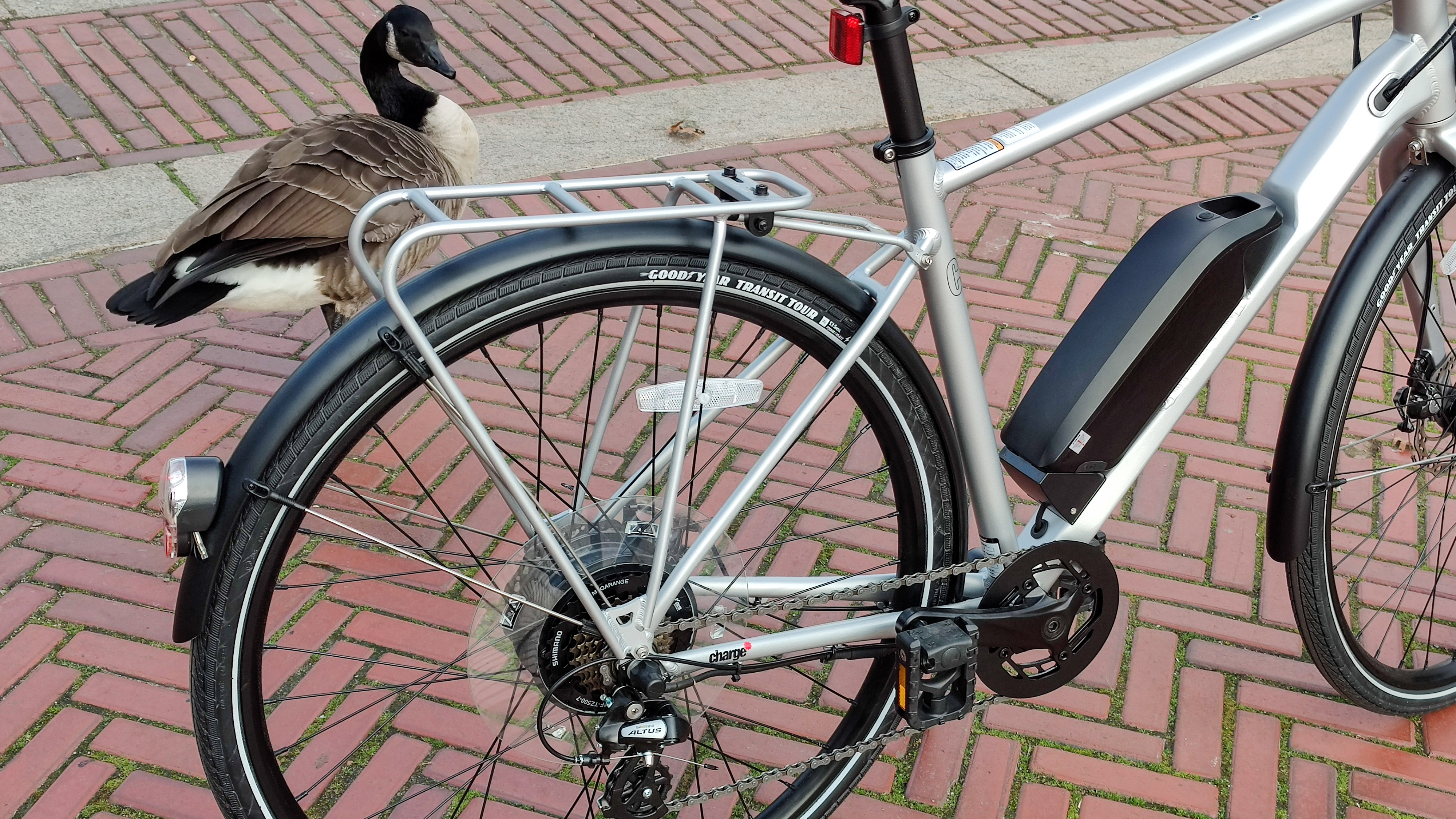
The bicycle’s aluminum frame and battery mean the Charge City tips the scales at 45 pounds—not the lightest but far from the heaviest ebike if you’re hauling it up and down stairs. The pedals and handlebars fold flat, making it easier to store in an apartment or cubicle. And the removable battery means it’s easier to charge.
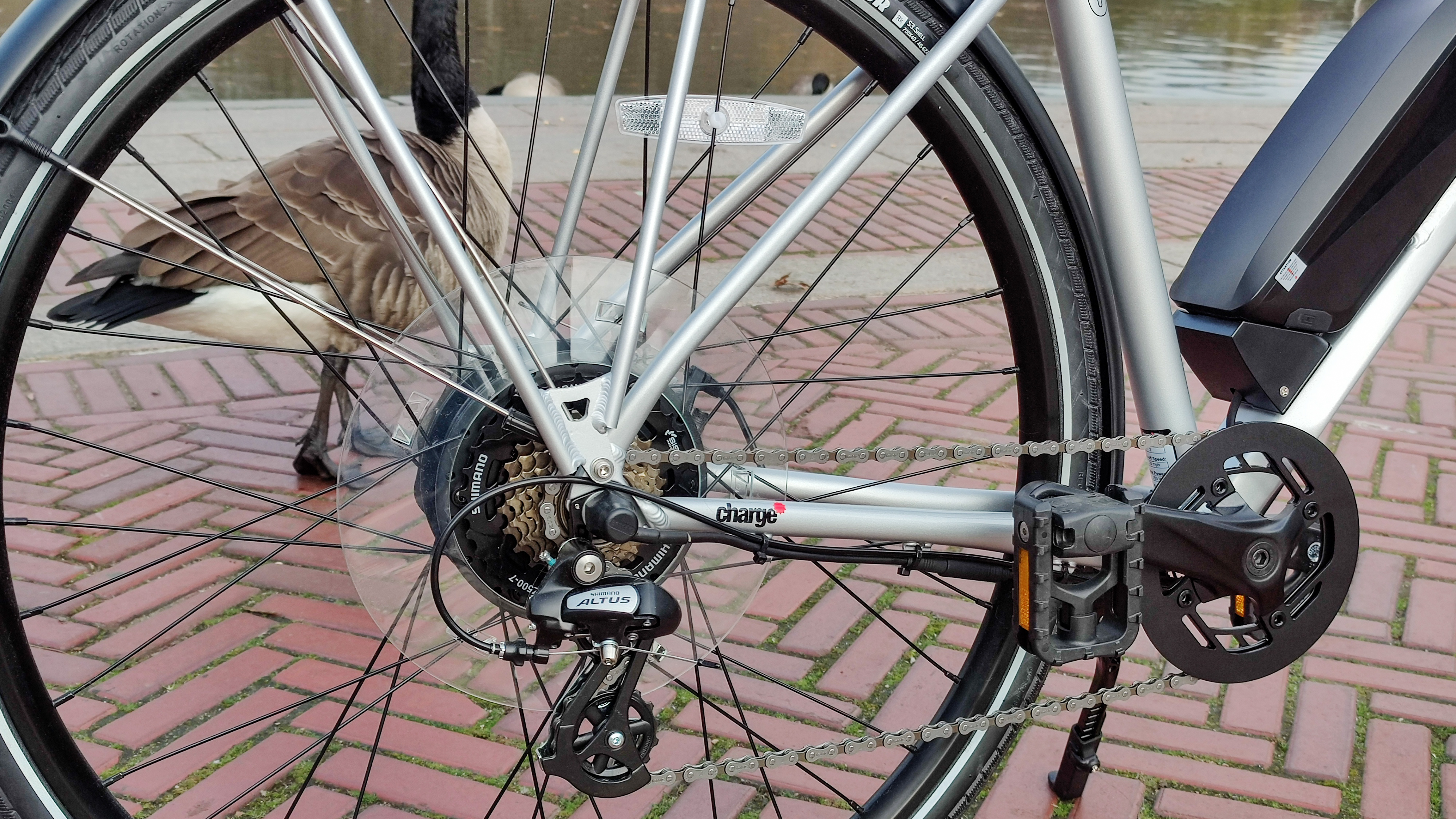
Most of the components are solid and reliable. The Bafang rear hub motor seemed a good match to the Shimano 7-speed gears and derailer. The handle-twist gears switched smoothly and provided sufficient range for pedaling around town. Disc brakes kept us in control, and we like the practical additions: a kickstand, front and rear fenders (to keep the mud off our jeans), and a built-in rear bike rack. Our only criticism: the fender supports were too easily knocked out of position moving the bike in and out of an apartment.
Charge Bikes City electric bike: Performance
Riding around town, the Charge City is surprisingly spry for such a big bike. It handles well, whether you’re wending your way through stalled traffic or swerving around potholes. At higher downhill speeds, it also maintained its composure without excessive wiggles or vibrations that might affect a rider’s confidence.
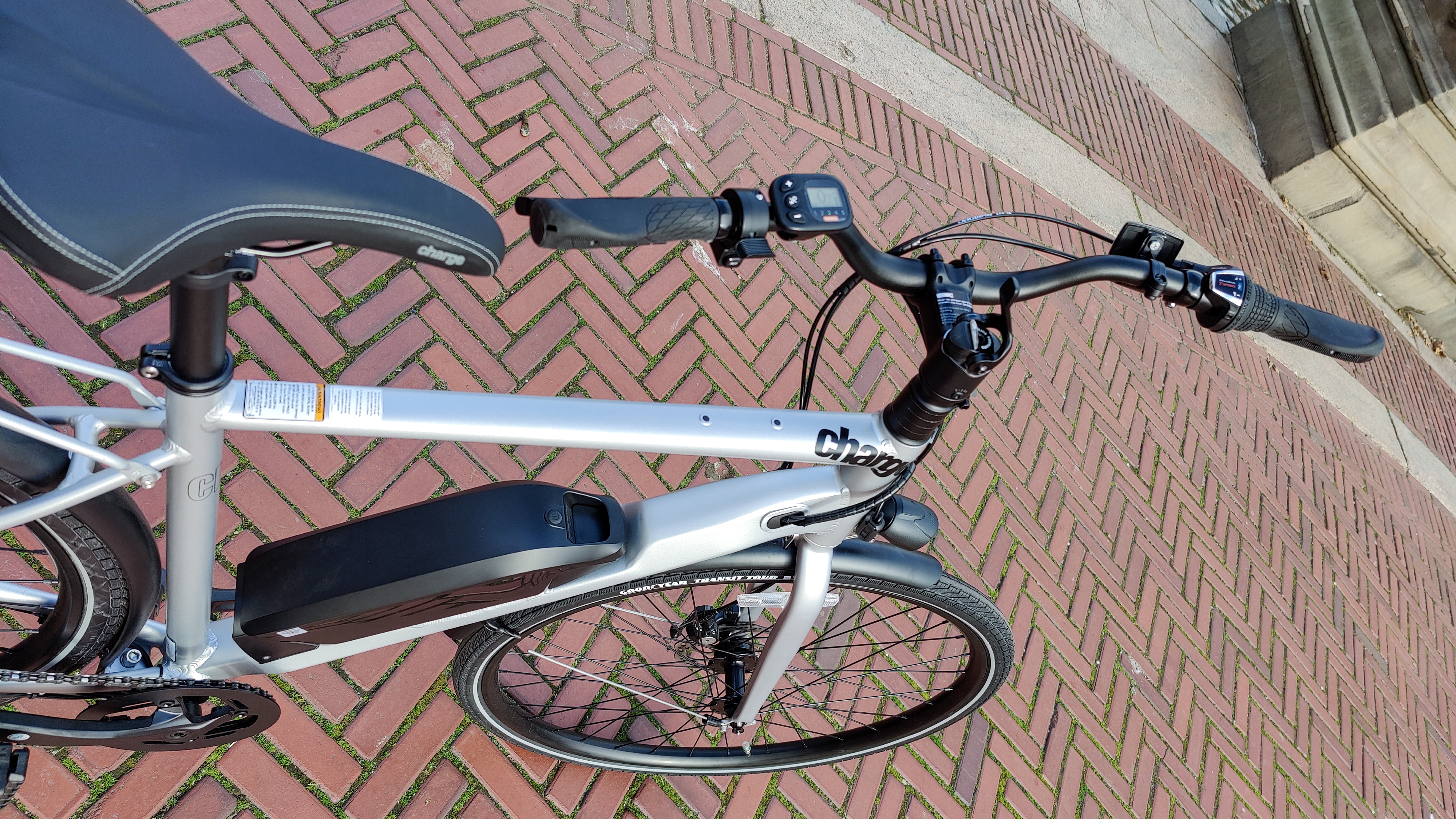
Tested on rough urban streets and smoother bike paths and parkways, we found the Charge City did well in both environments. Its upright riding stance and wide handle-bar grips also made it feel safer in metro traffic where riders need to keep their heads up looking for distracted drivers and pedestrians. Disc brakes, front and back, also kept us out of trouble and were responsive without being too sensitive or grabby. Moreover, we found the rear light helpful when it came to keeping drivers alerted to our presence (many bike-car collisions occur when cyclists are rear-ended by vehicles).
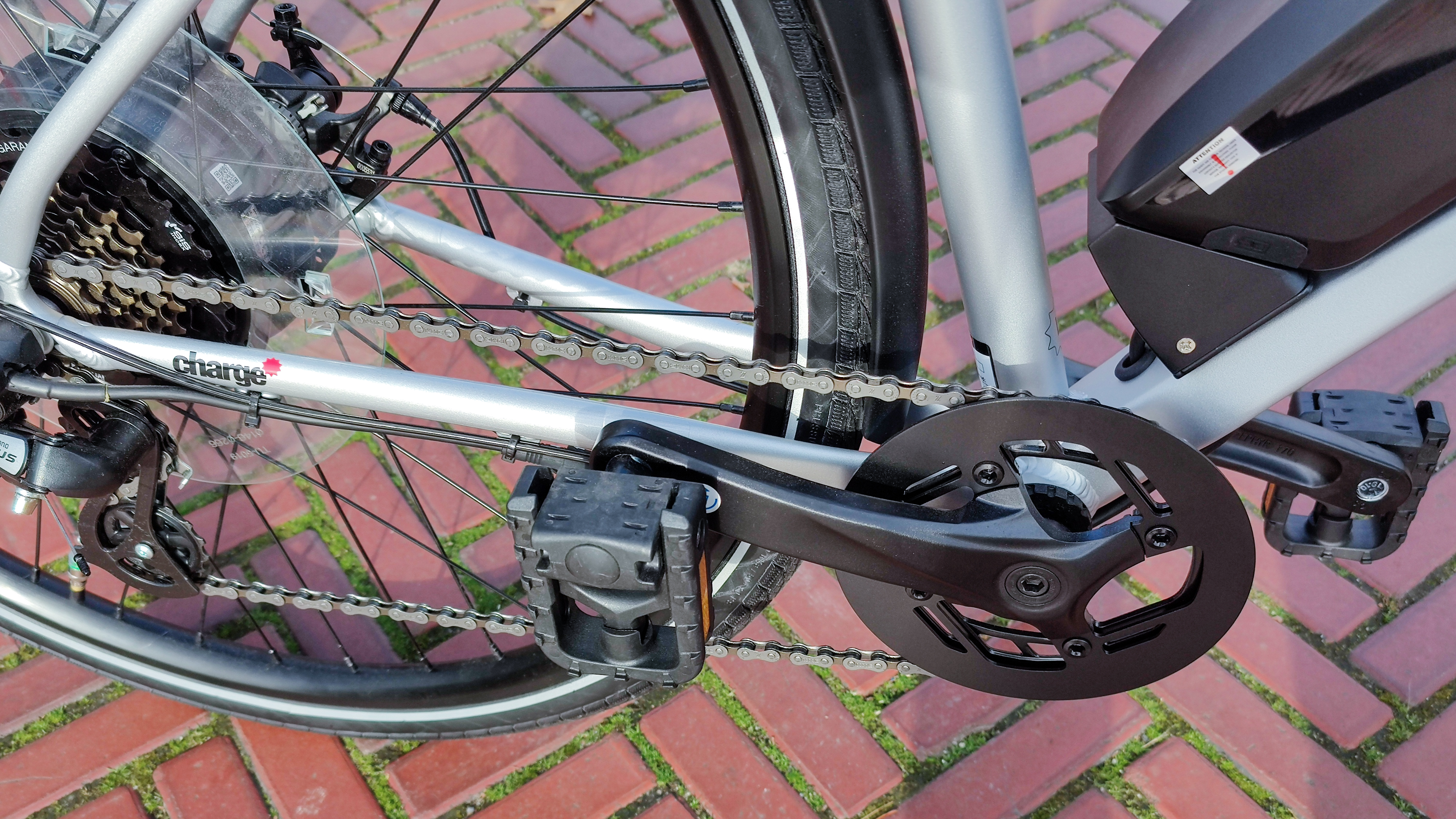
The Charge City isn’t going to run circles around a carbon fiber road bike or a 20-pound trail jumper but such models cost thousands more and aren’t as comfortable to ride on urban streets.
Charge Bikes City electric bike: Battery life
The Charge City’s lockable battery is removable so you can take it inside to plug in. The company rates it for 50 miles, but as with all ebikes, your mileage may vary. If you hold down the thumb throttle on the left handlebar, then the battery is going to drain much more quickly than if you keep it set to just assist you at low levels.
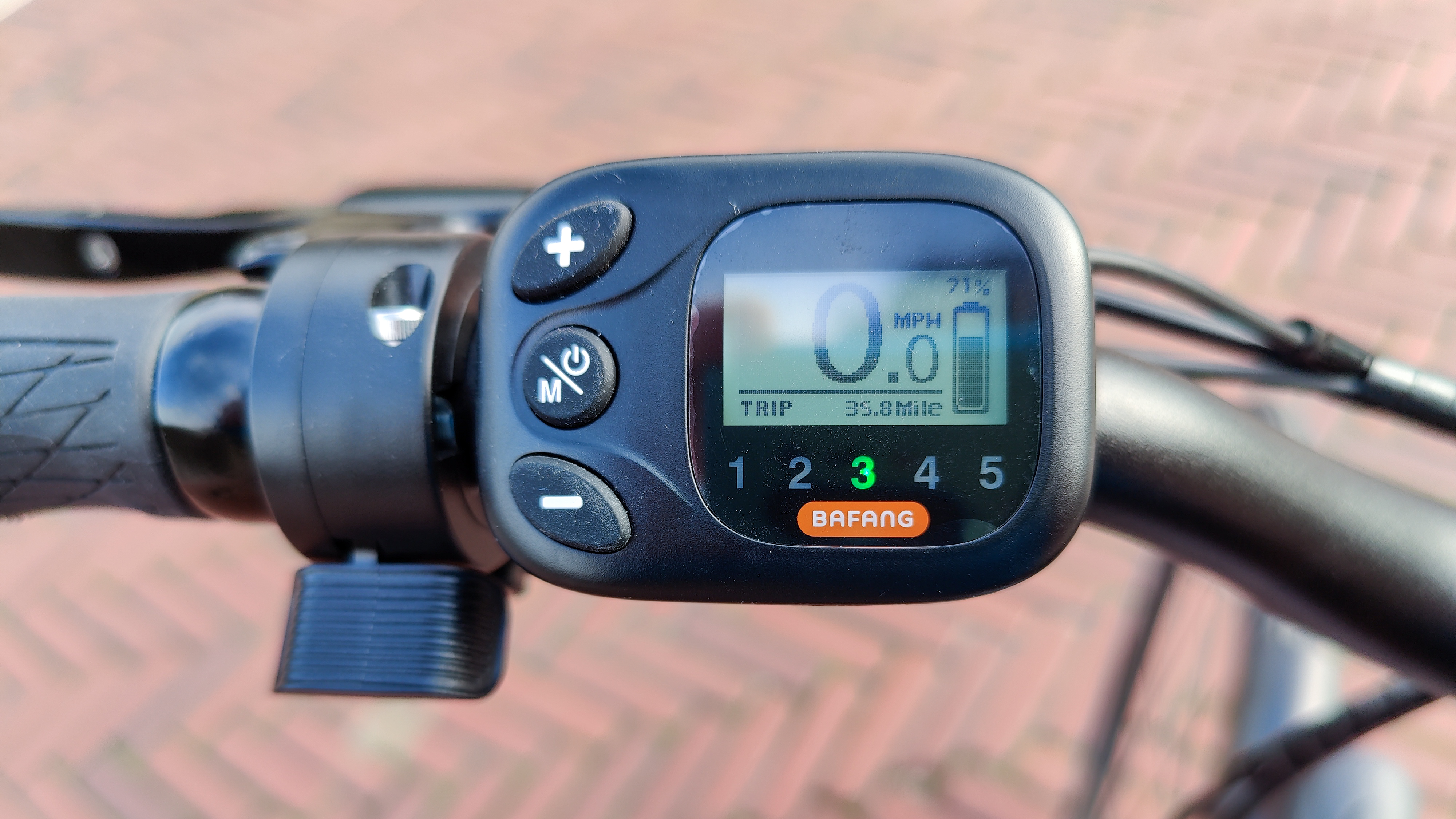
The bike allows for 5 levels of electric assist that is easily adjusted via a monochrome display (it also shows remaining battery level and trip distance). We generally kept it at 2 or 3 to handle moderate hills and standing starts. (The throttle button was particularly helpful taking off from stop lights on hills.) In this configuration, we were able to do three days plus of typical city commuting before having to re-charge (pretty much in line with the company’s mileage rating). At night, the bike's lights sufficiently lit up the road and the throttle helped us zip around potential trouble when we felt out of gas.
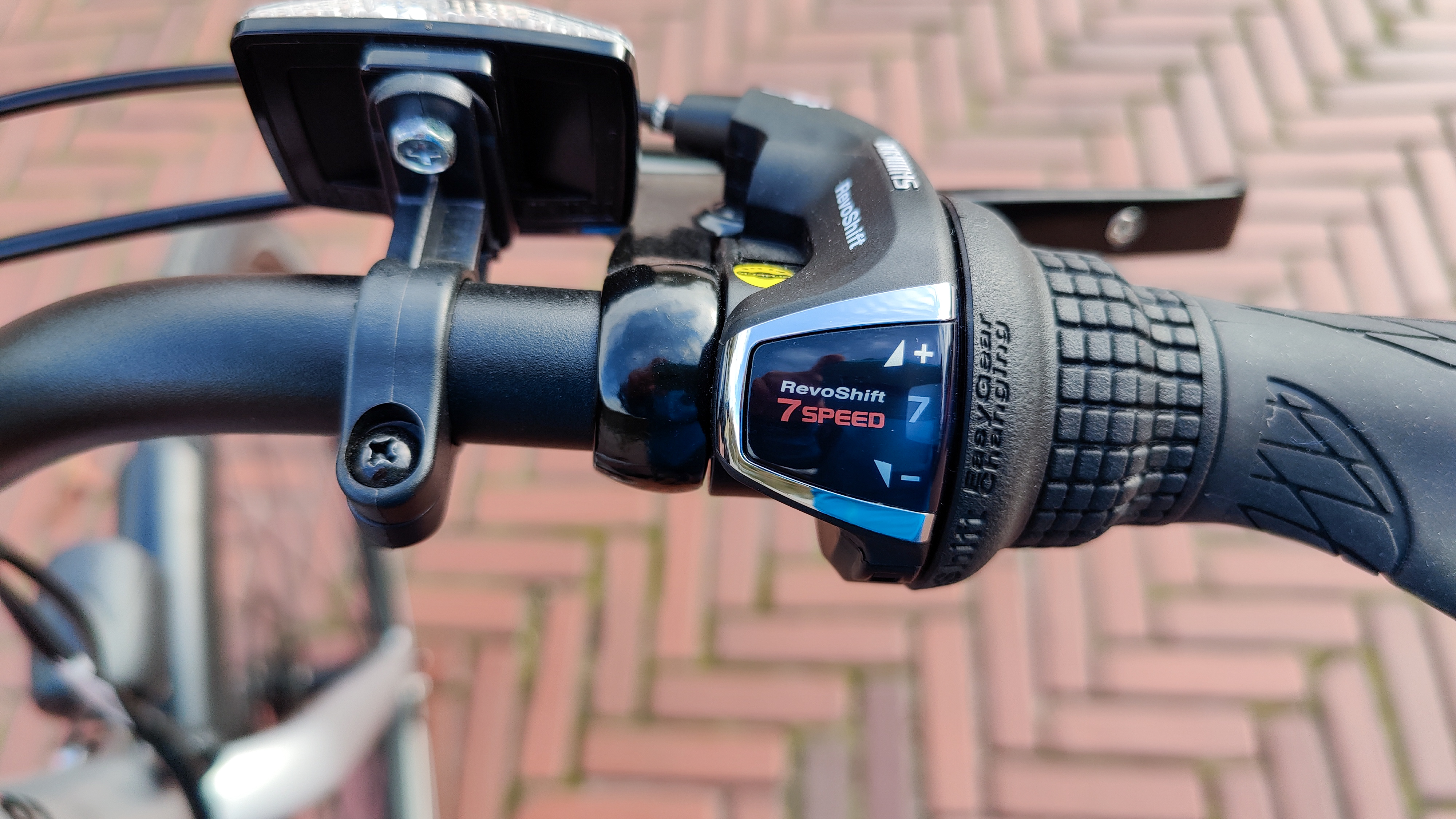
The Charge City’s 250-watt motor is also powerful enough to give larger riders a boost and help them get to work or across town without breaking a sweat. Better still, the combination of the Bafang hub motor and Shimano gearing means the City's electric support is so smooth you'll think you're doing all the work yourself.
Charge Bikes City electric bike: Competition
There are scores of ebikes on the market now trying to take advantage of the renewed interest in the category since the beginning of the pandemic. Among the competition there are faster 28-mph urban ebikes, such as the Gazelle Medeo T10+ HMB, but they can easily cost as much as $2,000 more. Also in this group are models with a more aesthetically pleasing design and technical details, such as the VanMoof S3. But again, you’re going to pay roughly $500 more for such bikes.

So the Charge Bikes City sits in a sweet spot of price and performance for cliff dwellers looking to rejuvenate their interest in biking not only on the weekend but also during the week.
Charge Bikes City electric bike: Verdict
If you plan on commuting to work, Charge Bikes City may well be the best electric bike available at the moment. Not only does it come with features such as full-fenders to keep you clean and a rear rack for a pack or bag, but it does everything well for a very reasonable price. And, we love its folding handlebars and pedals, good for storing the bike in tight spaces.
We appreciated its smooth five-level power assist, as well as a full-power throttle option. Indeed, the Charge City comes with all the necessary bells and whistles a commuter is going to want, including the bell (actually a superior and very loud electronic horn). Heck, you don’t even have to pedal if you don’t feel like it.
John R. Quain has been reviewing and testing video and audio equipment for more than 20 years. For Tom's Guide, he has reviewed televisions, HDTV antennas, electric bikes, electric cars, as well as other outdoor equipment. He is currently a contributor to The New York Times and the CBS News television program.
